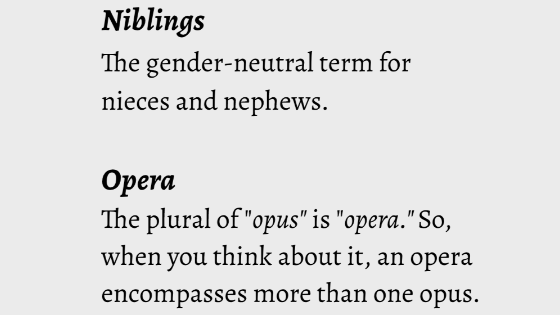Have you ever paused in the middle of a sentence, second-guessing the correctness of a plural form? It’s a common linguistic quirk that even seasoned writers and speakers stumble upon—the irregular plural. These linguistic oddities defy the predictable patterns we often associate with forming plurals in English. From mice and geese to teeth, feet, and oxen, these irregular plurals not only sound wrong but also challenge our understanding of the language’s rules. In this article, we’ll delve into some fascinating forms of irregular plurals, exploring their origins, usage, and why some of them continue to trip us up—even when we think we’ve got them figured out.
1.

The plural form of “beef” when referring to cattle is “beeves.” However, if you’re discussing disputes between celebrities on Twitter, those are referred to as “beefs.”
2.

The plural of “opus” is “opera.” So, when you think about it, an opera encompasses more than one opus. It’s a fascinating irregular plural indeed!
3.

The plural form of “sphinx” is “sphinges,” although “sphinxes” is also considered an acceptable alternative.
4.

The irregular plural of “biceps” is “bicepses.” Interestingly, “biceps” is a singular term derived from Latin, meaning “two-headed.” This refers to each biceps muscle connecting to the upper arm through two heads—one short and one long.
5.

The plural of “cul-de-sac” is “culs-de-sac.” In French, “cul-de-sac” translates to “bottom of a sack.” Interestingly, the plural “culs-de-sac” can be interpreted as “bottoms of a sack.” Quite a quirky way to describe these dead-end streets!
6.

The gender-neutral term for nieces and nephews is “niblings.” Surprisingly, this term was coined as recently as 1951, making it relatively new but certainly worth keeping alive!
7.

The irregular plural of “attorney general” is “attorneys general.” Likewise, we have “postmasters general,” “mothers-in-law,” and “coups d’état” as other examples of irregular plurals in English.
8.

The plural form of “octopus” is “octopuses,” not “octopi.” While “octopi” might seem like the plural based on Latin rules, “octopus” actually originates from Greek. The Greek plural would be “Octopodes.” However, when a word enters the English language, linguists suggest giving it an English inflection, leading to “octopuses” as the preferred plural form in English. So, as odd as it may sound, “octopuses” is the correct plural term to use.
9.

The plural form of “lasagna” is “lasagne.” This term refers both to the large, flat pasta sheets and the dish made with them. So, the next time you’re dining at your favorite Italian bistro, remember to order “lasagne” if you’re talking about more than one!
10.

The plural form of “Prius” is “Prii.” Toyota officially introduced this term following a 2011 vote that involved over 1.8 million people. “Prii” emerged as the preferred plural, beating out other contenders like “Priuses,” “Prium,” and “Prien.”
11.

The singular form of “spaghetti” is “spaghetto.” Similarly, the singular form of “confetti” is “confetto,” and the singular of “graffiti” is “graffito.” Language truly has its delightful quirks!






